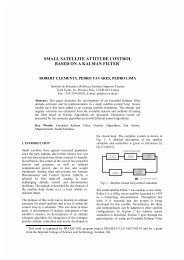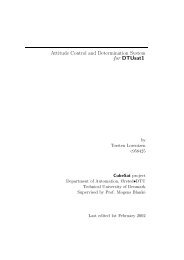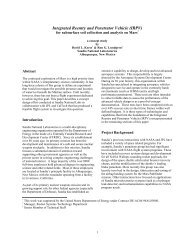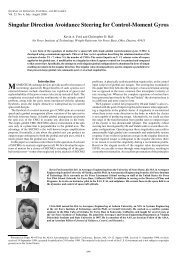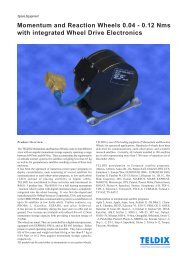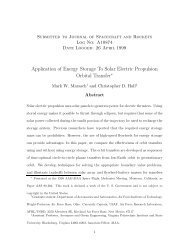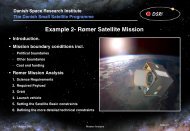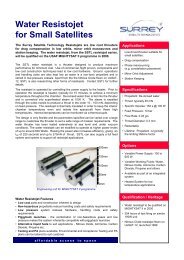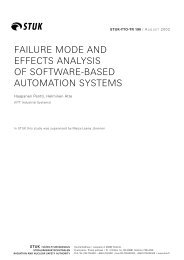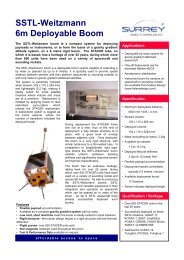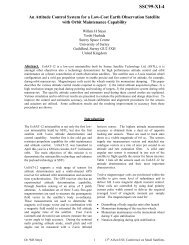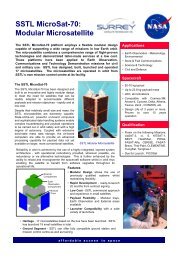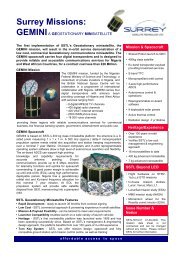Sea Launch User's Guide
Sea Launch User's Guide
Sea Launch User's Guide
Create successful ePaper yourself
Turn your PDF publications into a flip-book with our unique Google optimized e-Paper software.
7000<br />
6000<br />
Maximum expected capability<br />
available with upgraded SCA<br />
Spacecraft mass, kg<br />
5000<br />
4000<br />
3000<br />
Maximum expected capability<br />
with standard SCA 702<br />
2000<br />
1000<br />
SC Note: mass and CG limits calculated with<br />
a SC lateral mass load and factor CG limits = 2.0 calculated g and nowith<br />
load a lateral peaking load at factor SC interface = 2.0 g and stiffness<br />
uniform SC interface stiffness.<br />
0<br />
0.00 0.50 1.00 1.50 2.00 2.50 3.00<br />
Spacecraft CG, m<br />
265807J3-043R3<br />
Figure 6-4. Expected Spacecraft Mass and CG Limits With SCA702 and SCA702GEM Spacecraft<br />
Adapters<br />
6.2 Modal Frequencies<br />
Frequency limits<br />
<strong>Sea</strong> <strong>Launch</strong> can accommodate spacecraft with longitudinal and lateral<br />
fundamental frequencies below those commonly offered in the industry.<br />
As a guide, the spacecraft longitudinal fundamental frequency should be<br />
≥20 Hz and its lateral fundamental frequency should be ≥8 Hz.<br />
6.3 Electromagnetic Compatibility<br />
Radio frequency<br />
(RF) impingement<br />
on launch vehicle<br />
(LV)<br />
To avoid electromagnetic interference with LV systems, spacecraft electrical<br />
field radiation impingement on the LV must not exceed the levels<br />
shown in figure 6-5. Spacecraft RF system characteristics will be necessary<br />
for integrated analysis and for the required FCC special temporary<br />
authority (STA) license, which is necessary for Home Port RF testing.<br />
6-8 D688-10009-1 REV B



